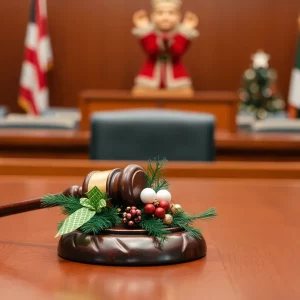Charleston County Faces Crucial Decision on Upcoming Half-Cent Sales Tax Referendum
As the sun rises over Charleston today, bringing a comfortable high of 82°F, it’s hard not to appreciate the natural beauty that this coastal city offers. However, as the weather stays pleasant with just a few clouds dotting the sky, residents are preparing to face a significant decision that could impact the future of their beloved green spaces and transportation systems alike.
A Step Back in Time
Let’s take a quick stroll down memory lane to 2004 when Charleston County implemented its first half-cent sales tax. This move marked the launch of the greenbelt program, which quickly blossomed into one of the country’s leading land conservation initiatives. Over the years, this program has protected around 27,000 acres of land, which is roughly the size of Mount Pleasant! Impressive, right?
However, while the greenbelt program has been a ray of sunshine for conservation efforts in the county, its counterpart—the transportation improvement initiative—has been less than stellar. Launched simultaneously, the latter has been plagued with issues, causing many to compare the two initiatives unfavorably.
The Upcoming Referendum
Fast forward to November 5, when residents will have the opportunity to vote on a new half-cent sales tax referendum. It’s essential to know that, rather than supporting the highly successful greenbelt program, a significant portion of this new tax would funnel billions into the faltering transportation efforts. The irony? This proposed new tax actually *reduces* the funding for the greenbelt program by half.
Critics are expressing their disbelief, noting that the previous transportation initiative has managed to deliver almost no meaningful improvements to the county’s congested roads. Only one out of ten promised projects has been completed since the second sales tax was approved back in 2016, which is quite disheartening.
Concerned Voices
One of the primary voices of concern is that of local business leaders, who argue that putting this half-cent sales tax on the ballot is *premature*. They point out that the new tax wouldn’t even take effect until the first one expires in 2027! It’s confusing for many residents as they question why a new tax is even being considered when the old one hasn’t been fully utilized effectively yet.
A History of Mismanagement
The tale becomes even tangled when discussing the I-526 extension. Funds from previous sales taxes, which were expressly not meant to be spent on this project, have somehow found their way into it, soaring to a staggering $2.3 billion. To many, this seems like a glaring example of mismanagement and political maneuvering.
The Greenbelt Program’s Achievements
Conversely, the greenbelt program, which has operated efficiently and *quietly* over the last two decades, continues to shine. Led by a 14-member advisory committee, it has completed nearly 200 land transactions. This program has *not only* preserved critical lands and parks but has also addressed the growing problem of development causing traffic nightmares for commuters, a point that should resonate with everyone living in Charleston.
What Lies Ahead?
Citizens of Charleston now find themselves at a crossroads. Should they support the upcoming sales tax that diminishes funding for the successful greenbelt program while favoring a troubled transportation plan? Or should they advocate for a revised approach to tackle the transportation issues that truly reflects the needs and priorities of residents?
As Charleston County heads closer to the November ballot, residents are encouraged to think critically about the future they want for their city. There’s a strong sentiment for voters to speak out and insist on plans that ensure outcomes as impactful and lasting as the achievements of the greenbelt program.
In Conclusion
No one can deny that Charleston faces increasing challenges, particularly in its transportation sector. But if the past two decades have shown us anything, it’s that well-managed conservation programs can yield excellent results. With the ballot approaching, it’s time for residents to weigh their options carefully, ensuring their vote reflects their hopes for a thriving, well-planned Charleston.



























